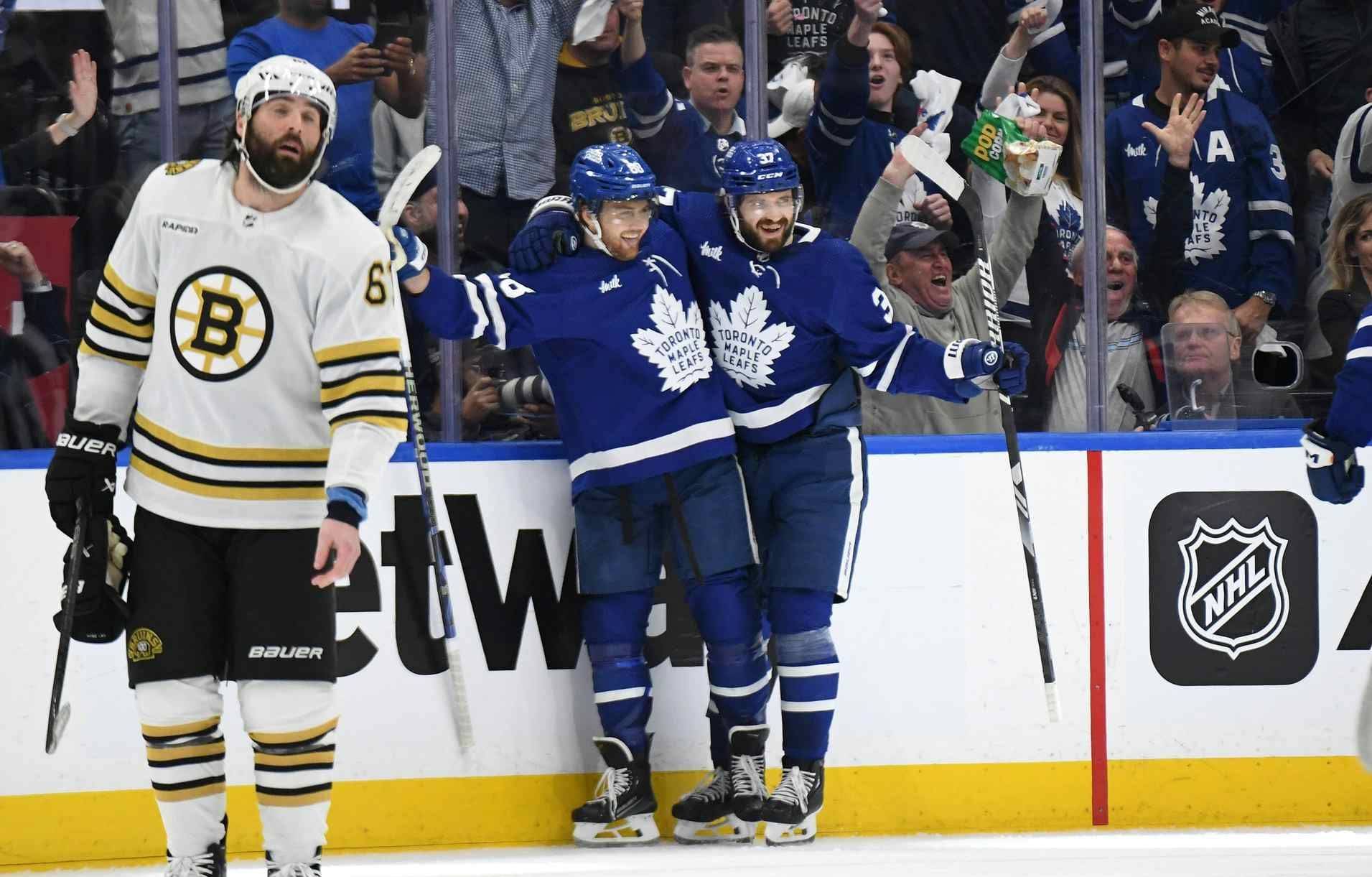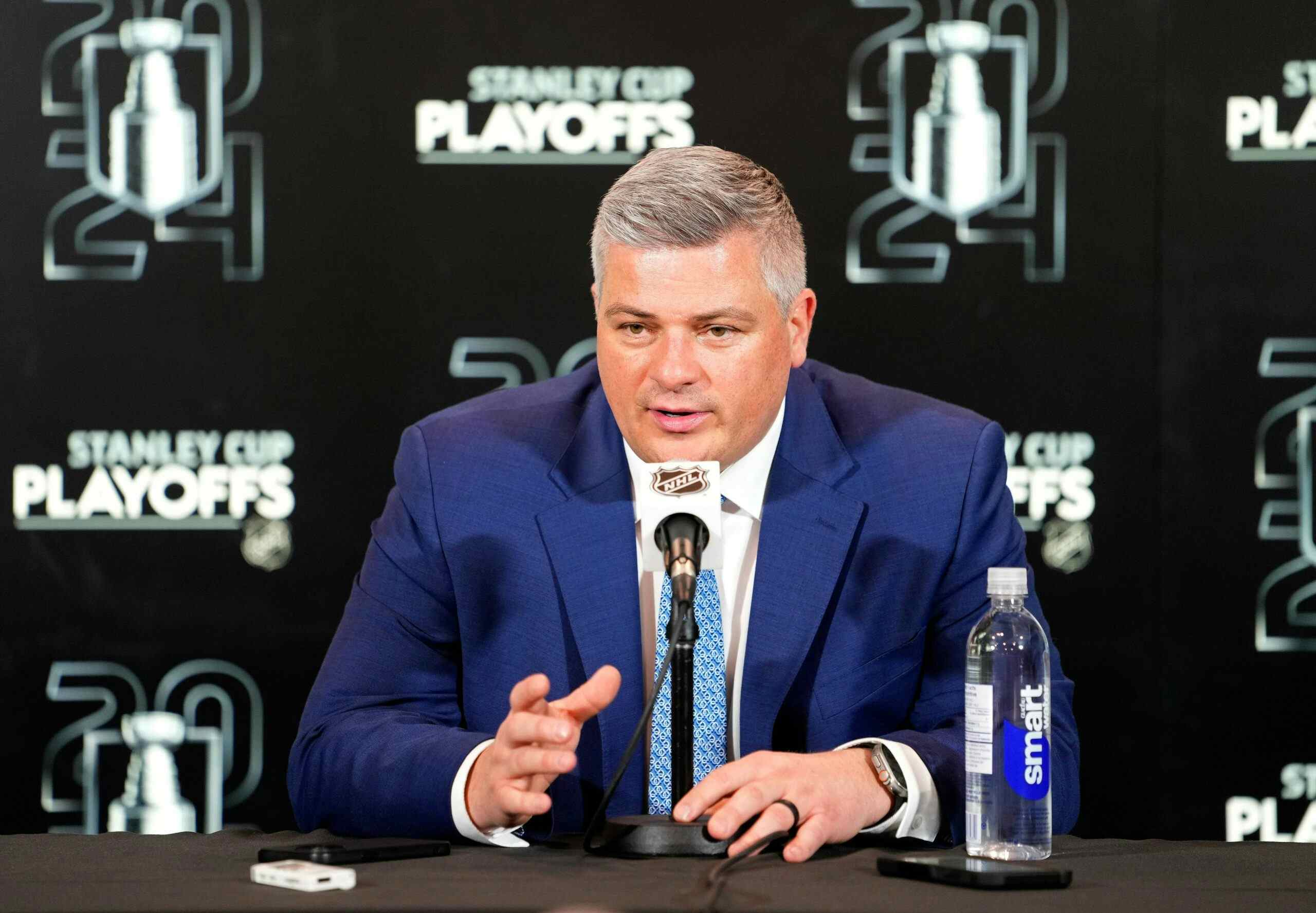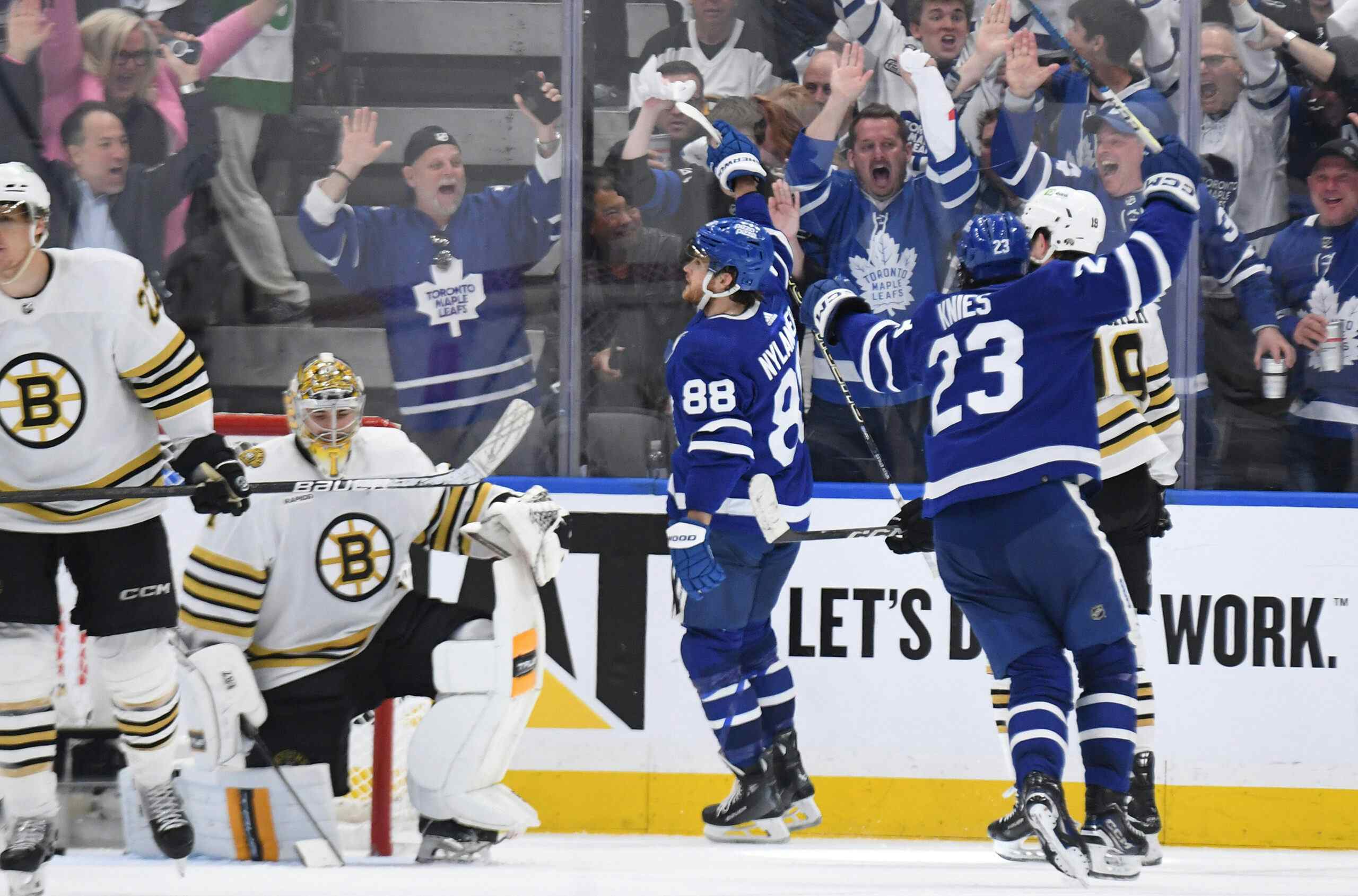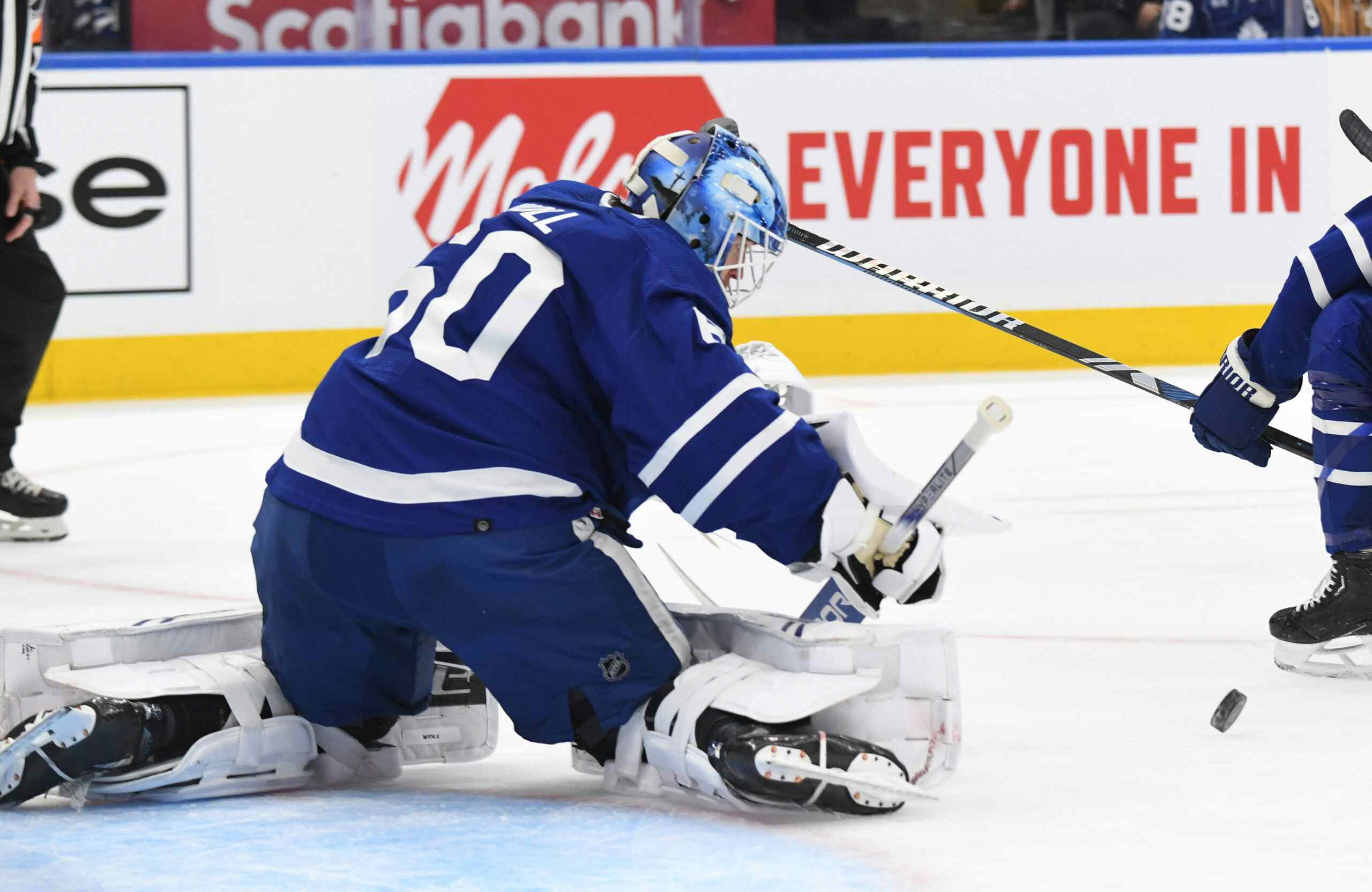Some thoughts on the new prospective No. 1 pairing
By Cam Charron
10 years ago
Randy Carlyle was running with some new defensive pairings today, and the new-look top pair, which will presumably be unveiled tomorrow night, is a familiar possibility to those of you that read here often:
I think Jake Gardiner and Morgan Rielly are excellent possession players and will succeed no matter who they’re with. There’s some evidence that both players have made their teammates better this season and we’ll get to that down the road. The third pairing is a re-construction of last year’s pair that led the league in PDO and Randy desperately wants to re-create. Unfortunately, injuries and lack of ability have really limited Mark Fraser this season and you get the feeling that every successive game is another potential “last as a Leaf”.
But the first pairing is what I want to focus on. That’s Tim Gleason in Carl Gunnarsson’s familiar spot. Gunnarsson was knocked out of the game against New York and will have to be replaced by somebody. Looks like Gleason’s the guy.
Over the last three seasons, the Maple Leafs have run with Phaneuf and Gunnarsson on the top pair, handling the heavy minutes and under Ron Wilson, they were actually very close to an even Corsi—or puck possession—despite the load. Carlyle’s system is a bit different however, and unlike common defensive setups at the NHL level determined to isolate the puck carrier, the Leafs like to (well, Jonathan Bernier and James Reimer can’t like this) overload the side of the ice with the puck, force the opponent to take shots and emphasize recovery. This means that there are a lot of shots against (contributing to the team’s low Corsi numbers) and unless the system is executed perfectly, along with a variety of scoring chances since the Leafs are leaving large patches of dangerous ice open.
That’s part of the reason it’s tough to get a good read on how effective the Phaneuf-Gunnarsson pairing actually is. Sure, at 5-on-5, Phaneuf is a +13 and Gunnarsson is a +8, but that’s more likely due to the respective .961 and .951 save percentages Phaneuf and Gunnarsson enjoy when they’re out on the ice [via ExtraSkater]. Keep in mind a year ago, those two numbers were .924 and .928 respectively, so either 3-36 are a little luckier on the whole this year in regards to getting good goaltending or they’ve suddenly unlocked a hidden talent, or, just as likely, they’re executing the system well but their play leaves no margin for error and as a result, their numbers are unsustainable. You could work with the first or third possibility being reasonable, but as seen in the game against New York, there are flaws to what the Leafs do in their own end, and you could see the defencemen all totally lost when attacked one-on-one.
Anyway, as a result, Gunnarsson and Phaneuf’s numbers have suffered during the calendar year of 2013.
Gleason, thankfully, has played on Carolina for most of his career, a team that employs a more standard setup and hasn’t had puck-possession numbers deviate too high or low any one year, meaning we can sort of gauge how he’s played over the last five years:
| TOI | Rel QoC | Partner | CF% with Partner | Gleason CF% without | Partner CF% without | |
|---|---|---|---|---|---|---|
| 09-10 | 15.44 | 1.250 | Corvo | 49.1% | 46.7% | 57.5% |
| 10-11 | 16.47 | 0.705 | Corvo | 45.6% | 48% | 54.4% |
| 11-12 | 17.31 | 1.243 | Allen | 48.4% | 47.1% | 46.5% |
| 12-13 | 16.26 | 0.850 | Corvo | 50.5% | 47% | 52% |
| 13-14 | 14.13 | 0.225 | Harrison | 46% | 49% | 46.4% |
Data via BTN and HockeyAnalysis
Just a note on what the columns mean: TOI is 5-on-5 time on ice per game, calculated with decimals to make for easier math. Rel QoC is Behind the Net’s best quality of competition measure. 2.000 is generally the highest you’ll find for any regular player in a given season, and anything above 0.800 is top-pairing minutes. It’s calculated by weighting the shot differential numbers of your matchup opponents. CF% is Corsi percentage, or a visual representation of a team’s share of shots with a player on the ice. 50% means the shot attempts were even. Anything above 55% is excellent, below 45% you have a lot of questions, and below 40% you need to kill something with fire (Phaneuf and Gunnarsson are at 38.7% this year).
Basically, we’re finding that Gleason’s most common partner over the last five years, Joe Corvo, has much better numbers without Gleason than with. That being said, Gleason’s pairing was generating pretty solid numbers for a cheap defensive unit playing what amount to top-pairing minutes. They were above 50% just once, but came very close in ’10 and ’12. I don’t know what happened in 2010-2011 with those two, but one bad year in isolation shouldn’t freak anybody out.
The real problem is that the Hurricanes haven’t counted on Gleason this year. I posed the question on Twitter and one of the smartest hockey data people on the web, @ShutdownLine, who happens to be a Hurricanes fan and a big supporter of Gleason in previous years, chimed in:
“Taking on a lot of mileage” seems weird for a 31-year-old defenceman, but he was a high-minute guy for three years and sustained various injuries. Those have kept him out of the lineup this year, and I don’t want to sweat this year’s numbers because he has played very little time in the lineup. What I mostly wanted to do is see whether Gleason’s Relative Corsi number, which was a reasonable -5.1 in 2010 (would put him on our list of good defenders from this Phaneuf post) dipped to -11.5 a year ago, and whether that was simply due to the Hurricanes getting better overall.
It’s possible. Bobby Sanguenetti and Jamie McBain had a pretty good year with Jordan Staal a year ago. This chart shows how the Hurricanes have varied in Corsi, but Gleason didn’t:

That will affect his relative numbers to a degree. It doesn’t change the fact that Gleason was always the weaker link in his defensive pairing, but for a few years there the Canes top pairing numbers were close to even despite them being a pretty pedestrian hockey club by way of puck possession.
I’d rather the Leafs system change than the players, but evidently, 3-36 just wasn’t working anymore as a pairing and I don’t blame Carlyle for looking for a shakeup, and Dave Nonis gave him a player who was a top-pairing defenceman until a year ago. I’m almost optimistic about this, since it’s at least an indication the team knows something is wrong, even if they aren’t sure how to fix it. We’ve seen times when not useful players have become useful players after injury or vice-versa, and the problem with individual Corsi numbers is they don’t really take system into account.
So I guess the real answer after all this is that I don’t really know what to expect, only that it will be something different, and that’s welcome. I always welcome the idea of bringing aboard once-useful players that their teams gave up on (such as Mason Raymond, or Mikhail Grabovski, or Clarke MacArthur) so long as the price is low. In this case, the Leafs gave up John-Michael Liles, who is on a similar contract and a similar type of project—once good, hurt by injuries—and the difference between them is seasoning to taste: Liles is more offensive, Gleason is viewed as the more reliable defensive zone option.
Recent articles from Cam Charron





